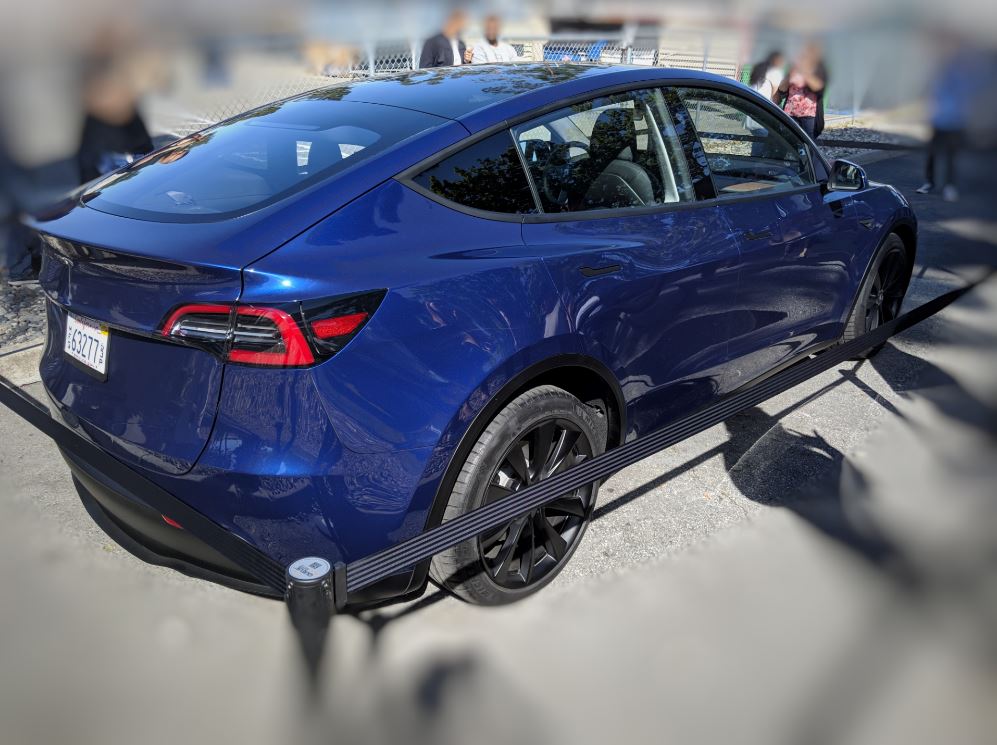
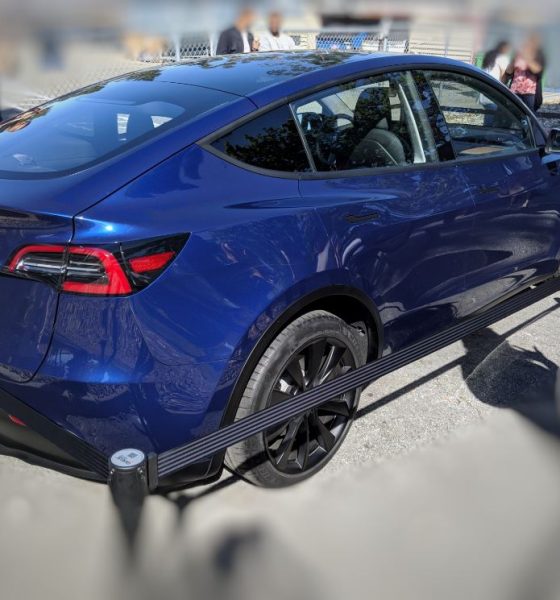
News
Tesla’s Elon Musk details Model Y manufacturing improvements, insight on design
Tesla CEO Elon Musk recently revealed improvements the all-electric car maker has made to its production process for the Model Y crossover SUV. In an interview on Ride the Lightning podcast, hosted by Ryan McCaffrey, Musk discussed lessons learned from Tesla’s prior transition from the Model S to the Model X as applicable to the Model Y, as well as decisions made from the vehicle’s outgrowth of the Model 3. He additionally provided some insight on the design decisions behind the Model 3, which also carry over to the Model Y’s design.
Musk and McCaffrey’s discussion about the Model Y production process began with the question, “What are the biggest lessons learned from the Model 3 program that you’re applying to the Model Y?” However, Musk indicated that a more relative learning comparison came from Tesla’s design of the Model X and its departure from the Model S.
“The Model X ended up being a radical departure from the S…with the Model Y, we wanted to avoid the technology bandwagon we had with the X. It should have been easy going from S to X, but instead, it was hell because of so many new technologies…It would be too risky to the company to do that with the Y,” Musk explained.
I'm celebrating episode 200 of Ride the Lightning, my weekly @Tesla podcast, in THE BEST way possible: a 1-hour interview with @elonmusk himself! 🥳 I can't wait to share our conversation with all of you! It airs this Sunday, June 2 @ 9am ET/6am PT on major podcast services. 🚗⚡️ pic.twitter.com/V0nFrU03Ir
— Ryan McCaffrey (@DMC_Ryan) May 30, 2019
The Model Y crossover needed to address the flexibility expected of vehicles in its class such as cargo capacity, seating for 6 or 7 people, and more ride height than a sedan. Tesla addressed these features while also keeping in mind the effect on battery range a larger vehicle might have, according to Musk.
“We tried to make the car as similar to the [Model 3] as possible except in the case where a change was necessary to achieve SUV functionality…[all] while still having a low drag coefficient and not increasing the frontal area too much,” he detailed. Overall, Musk concluded that CdA (automobile drag coefficient) and mass of the Model Y only affect 8-10% of the battery range when compared to the Model 3.
The design of Tesla’s Model Y and lessons learned from Model 3 production also led to some manufacturing improvements for the electric crossover. Musk detailed how the Model Y underbody was switched to aluminum casting instead of stamped steel and aluminum pieces, which greatly simplifies the moving parts involved in making the vehicle.
This change effectively means that initially, using two castings to make the structure will take the process from 70 parts to 4 (castings plus joiners), and once the “big” casting machine comes into operation, the process will have brought the process from 70 parts to 1 (casting only). Using casting over stamping reduces the weight of the Model Y, improves MHB (heat produced), lowers cost due to the smaller number of parts necessary, and significantly drops capital expenditure on robots.

As for the manufacturing location of the Model Y, Musk said the decision was not quite final, but the default place was Tesla’s factory in Fremont, California, with the runner-up being Gigafactory 1 in Sparks, Nevada. Producing the Model Y in Fremont would be the fastest way to bring the crossover SUV into production, according to Musk. “One choice isn’t natural over other,” he said. Freemont is producing the Model 3 and the two vehicles share 75% of their components, but Gigafactory 1’s location has a lower cost of living, meaning an overall better value for Tesla.
The similarities between the Model Y and Model 3 being what they are, Musk also discussed with McCaffrey some of the design decisions that initially went into creating the Model 3. In response to the question, “What’s the toughest design decision you had to make on Model 3?”, the CEO cited two primary factors that went into the midsize sedan’s creation: the touchscreen and the nose design.
Reducing the number of screens from two in the Model S to one in the Model 3 came with some pushback, Musk explained. However, he felt that owners would prefer an open view of the road, and everything needed while driving could be fit onto one screen.
This background brought up community rumors about a heads-up display (HUD) being included in Tesla’s vehicles. On the subject, Musk set the record straight – there was never any plan to include a HUD, nor will one be added in the future. He simply doesn’t like them, and the move to self-driving makes them pointless. “We discussed it, but I’ve tried various heads up displays and found they were annoying,” he said. “We felt the car would increasingly go to self-driving…As things are approaching autonomy, why project things you don’t even care about on the screen?”

Something that customers do care about, though, is the look of their car. Musk detailed the difficulties in making an attractive design for the Model 3, which wasn’t easy thanks to the lack of a front grill on the vehicle. “You don’t want to have the nose to look like Voldemort…You’ve got to get some character or it does not look good.”
Also mentioned was the decision to reduce the width of the Model 3 to 185 cm over the 195 cm of the Model S to help sell more cars in Japan. The country’s parking machines only accept cars up to 195.4 cm wide, which leaves very little wiggle room in the manufacturing process to meet. The change to 185 cm meant that any Tesla Model 3 could fit in any parking garage in Japan.
The Model Y is set to begin production in 2020, and reservations are currently open on Tesla’s website.
Listen to McCaffrey’s full Ride the Lightning podcast interview here.
News
Tesla is launching a crazy new Rental program with cheap daily rates
This week, Tesla launched its in-house Rental program that will give people a vehicle for between three to seven days, with prices varying and starting at just $60 per day.
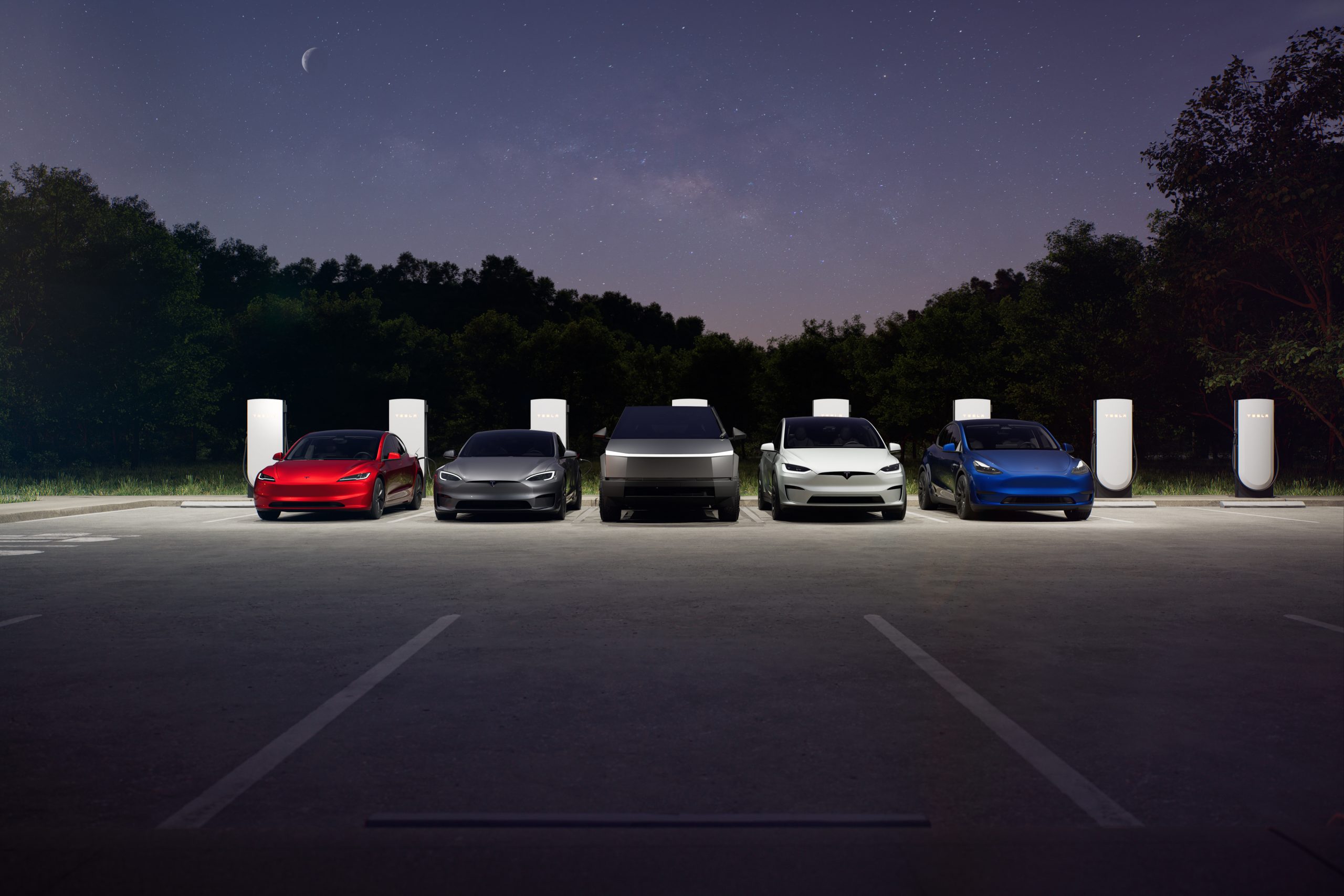
Tesla is launching a crazy new Rental program with cheap daily rates, giving people the opportunity to borrow a vehicle in the company’s lineup with an outrageous number of perks.
This week, Tesla launched its in-house Rental program that will give people a vehicle for between three to seven days, with prices varying and starting at just $60 per day.
However, there are additional perks that make it a really great deal, including Free Supercharging and Free Full Self-Driving (Supervised) for the duration of the rental.
There are no limits on mileage or charging, although the terms do not allow you to leave the state you are renting.
Tesla wrote in an email advertising the program:
“Rent a Tesla and see how it makes every errand, commute, and road trip more fun. While it’s yours, try Full Self-Driving (Supervised) and control and monitor your vehicle with the Tesla app.
Schedule your rental for three to seven days starting at $60 per day (plus taxes and fees) and charge for free at any Tesla-owned Supercharger.
Order your own Tesla within seven days of your rental to get up to a $250 credit toward your purchase.”
This is a great opportunity that will convince MANY people to make the jump.
All your concerns about switching are answered within two days. It’s easier than owning a gas car ever has been. https://t.co/QayTf6YVbw pic.twitter.com/TCHqfTRpes
— TESLARATI (@Teslarati) November 8, 2025
Tesla has long adopted the mentality that butts in seats will sell cars, and for the most part, it is a great strategy. Driving a Tesla is different from owning and driving a combustion engine vehicle; it truly feels as if you are in a car from the past when you get back in an ICE car.
This strategy could be looked at as more of a way for people to experience Tesla ownership than anything.
Although some might use it as a typical rental program that will see it be a cool way to drive without putting miles on a personal car, most will use it as the 48-hour test drive was designed for, which is a short-term way to experience EV ownership.
Tesla is only offering this program at a handful of locations currently, including San Diego and Costa Mesa, California.
News
Tesla makes online ordering even easier
Tesla has a great trade-in program that allows you to give the company your vehicle in exchange for cash, even if it’s not an EV. Their trades are mostly fair, but the company seems to undervalue its own vehicles, and there have been plenty of complaints over offers in the past.
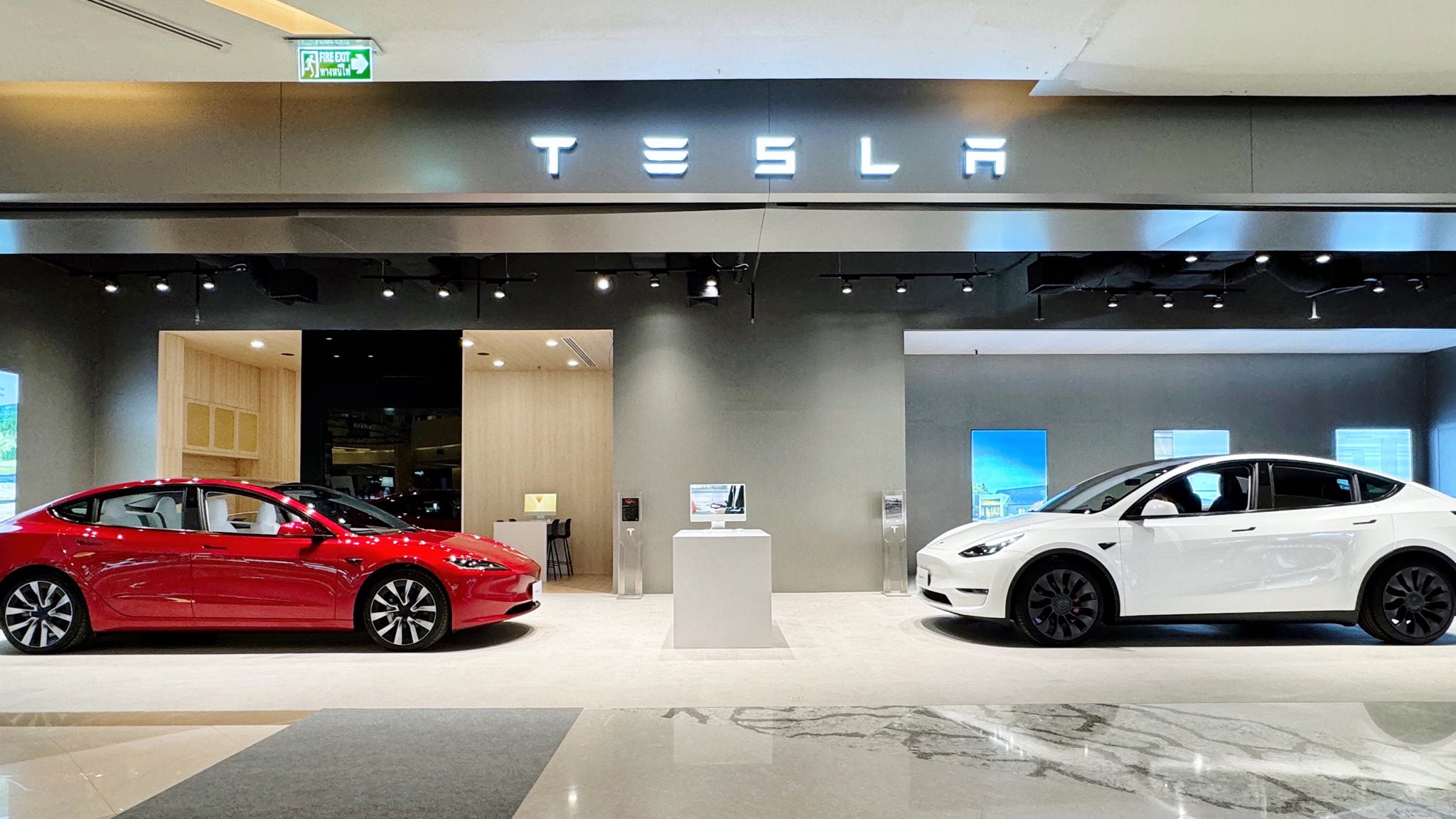
Tesla has adjusted its Online Design Studio to make for an easier trade-in process, reflecting the details of the exchange for a more accurate reflection of payment terms.
Tesla has a great trade-in program that allows you to give the company your vehicle in exchange for cash, even if it’s not an EV. Their trades are mostly fair, but the company seems to undervalue its own vehicles, and there have been plenty of complaints over offers in the past.
Trade-ins are usually given by submitting vehicle details, then Tesla sends an email with an offer. Offers are non-negotiable, but do adjust over time, although the latest offer is valid for 30 days.
I traded my ICE vehicle for a Tesla Model Y: here’s how it went
Knowing your new Tesla’s cash price, leasing or loan details, and monthly payment information used to be done by the car buyer. From personal experience, I simply subtracted my trade-in from the cash price of the Tesla Model Y, and I plugged those numbers into the payment calculator.
Now, Tesla is implementing the trade-in process directly into the Design Studio. It will adjust the price of the car and the different monthly payment methods automatically:
Trade-in estimates available directly on our configurator in few states including CA, will cover all of US and Canada next week.
For loyalty customers, if their trade-in VIN is eligible for any loyalty credit, the same will be applied to the estimate. pic.twitter.com/7097vPleMf
— Raj Jegannathan (@r_jegaa) November 8, 2025
The change is already noticed in a handful of states, including California, but it has not rolled out across the board quite yet. It will be implemented in all of the U.S., as well as Canada, this coming week.
The trade-in process is very simple, and after you accept your offer, you simply drop your vehicle off during the delivery process. Making this simple change will be greatly appreciated by owners.
News
Tesla confirms Robotaxi is heading to five new cities in the U.S.
After launching in Austin, Texas, in late June and the Bay Area of California just a few weeks later, Tesla has been attempting to expand its Robotaxi suite to new states and cities in the U.S., and even outside of the country.

Tesla Robotaxi will hit five new cities in the United States in the coming months, the company confirmed.
After launching in Austin, Texas, in late June and the Bay Area of California just a few weeks later, Tesla has been attempting to expand its Robotaxi suite to new states and cities in the U.S., and even outside of the country.
The Robotaxi suite is a ride-hailing service Tesla offers, but the details of it change with each jurisdiction, as regulations vary. For example, in Austin, Tesla can operate the Robotaxi suite without anyone in the driver’s seat, as long as the vehicle does not enter a freeway.
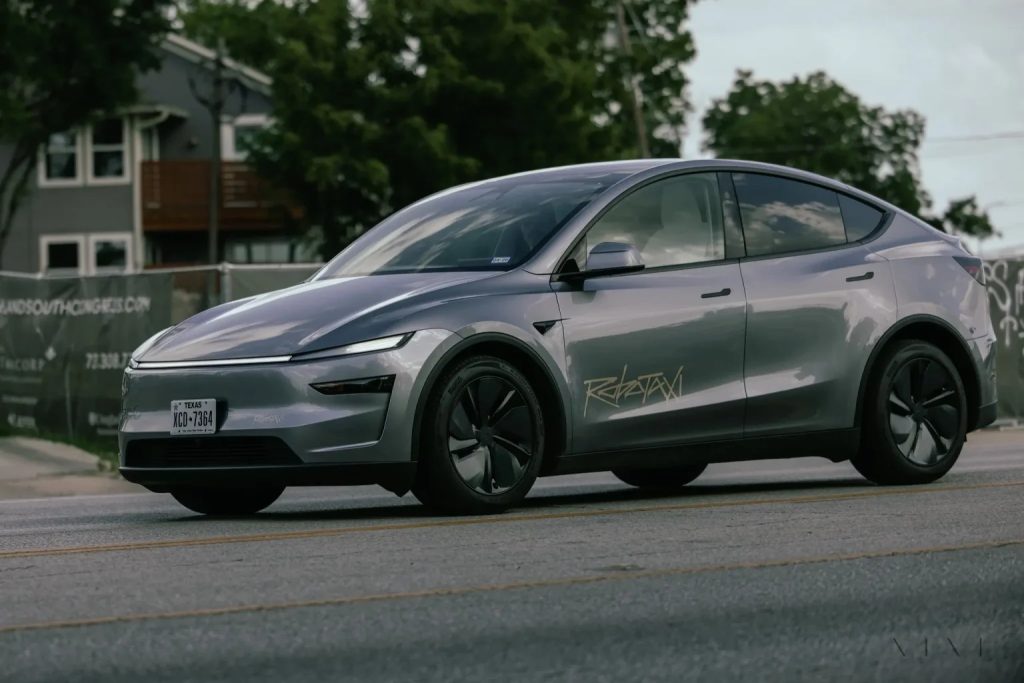
Credit: Tesla
In the Bay Area, a Safety Monitor rides in the driver’s seat, essentially acting as the vehicle operator with Full Self-Driving controlling the car.
The local regulations and how Tesla handles them will continue to be a relevant part of the discussion, especially as the company aims to expand the Robotaxi program to different areas. This has been a primary focus of the company for several months, especially within the United States.
CEO Elon Musk said that Tesla was aiming to launch Robotaxi in Nevada, Arizona, and Florida. However, the company detailed five specific cities where it will launch Robotaxi next during the Annual Shareholder Meeting on Thursday.
Tesla will launch Robotaxi in Las Vegas, Phoenix, Dallas, Houston, and Miami next, broadening its Service Area for the suite to more major cities across the U.S.
It has said it plans to offer the service to half of the U.S. population by the end of the year, but it does not seem as if it will expand to more than a handful of cities this year, which is still tremendous progress, all things considered.
As far as autonomy is concerned, Tesla has always had lofty expectations and has made some even loftier statements.
At the Shareholder Meeting, Musk said that the company would likely be able to enable vehicle owners to text while the vehicle drives, alleviating them from potentially having some of the responsibility they have behind the wheel.
Tesla says texting and driving capability is coming ‘in a month or two’
It is not confirmed that Tesla will roll this out in the next few months, but Musk said there is a possibility.
-
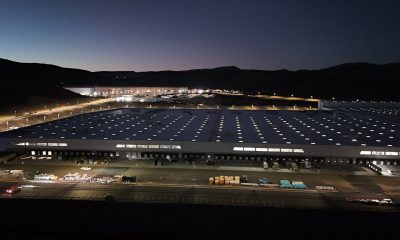
 News2 days ago
News2 days agoTesla shares rare peek at Semi factory’s interior
-
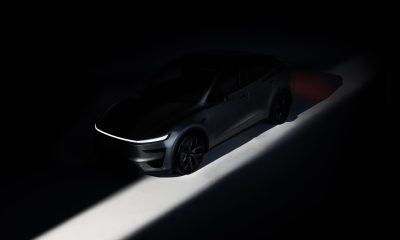
 News1 day ago
News1 day agoTesla Model Y Performance set for new market entrance in Q1
-

 News3 days ago
News3 days agoTesla Model Y Performance is rapidly moving toward customer deliveries
-

 News1 day ago
News1 day agoTesla makes online ordering even easier
-

 Elon Musk2 days ago
Elon Musk2 days agoTesla says texting and driving capability is coming ‘in a month or two’
-

 Elon Musk4 days ago
Elon Musk4 days agoTesla teases new AI5 chip that will revolutionize self-driving
-

 News2 days ago
News2 days agoTesla China expecting full FSD approval in Q1 2026: Elon Musk
-

 Cybertruck4 days ago
Cybertruck4 days agoTesla announces delivery timeline for Cybertruck in new market










